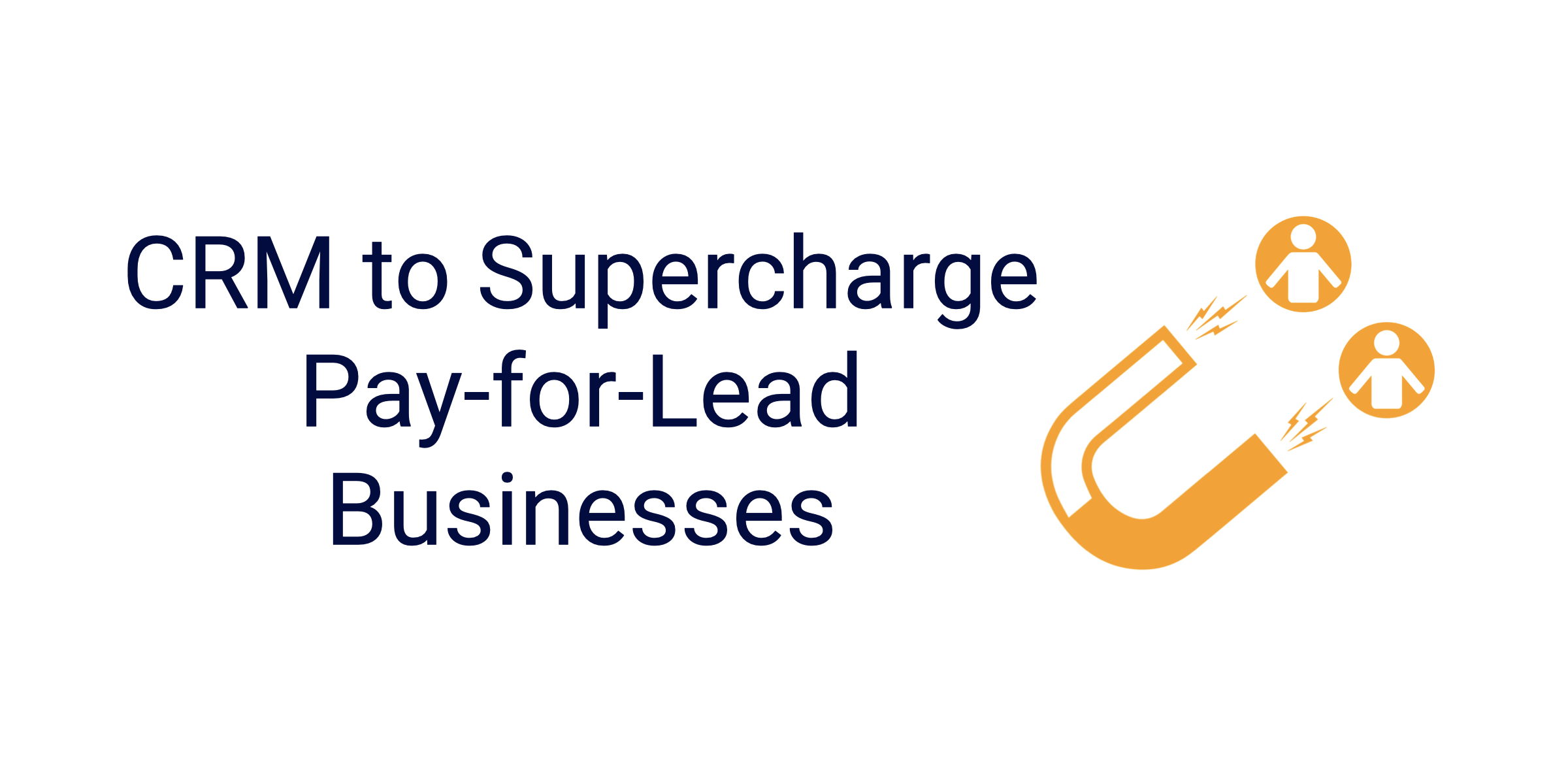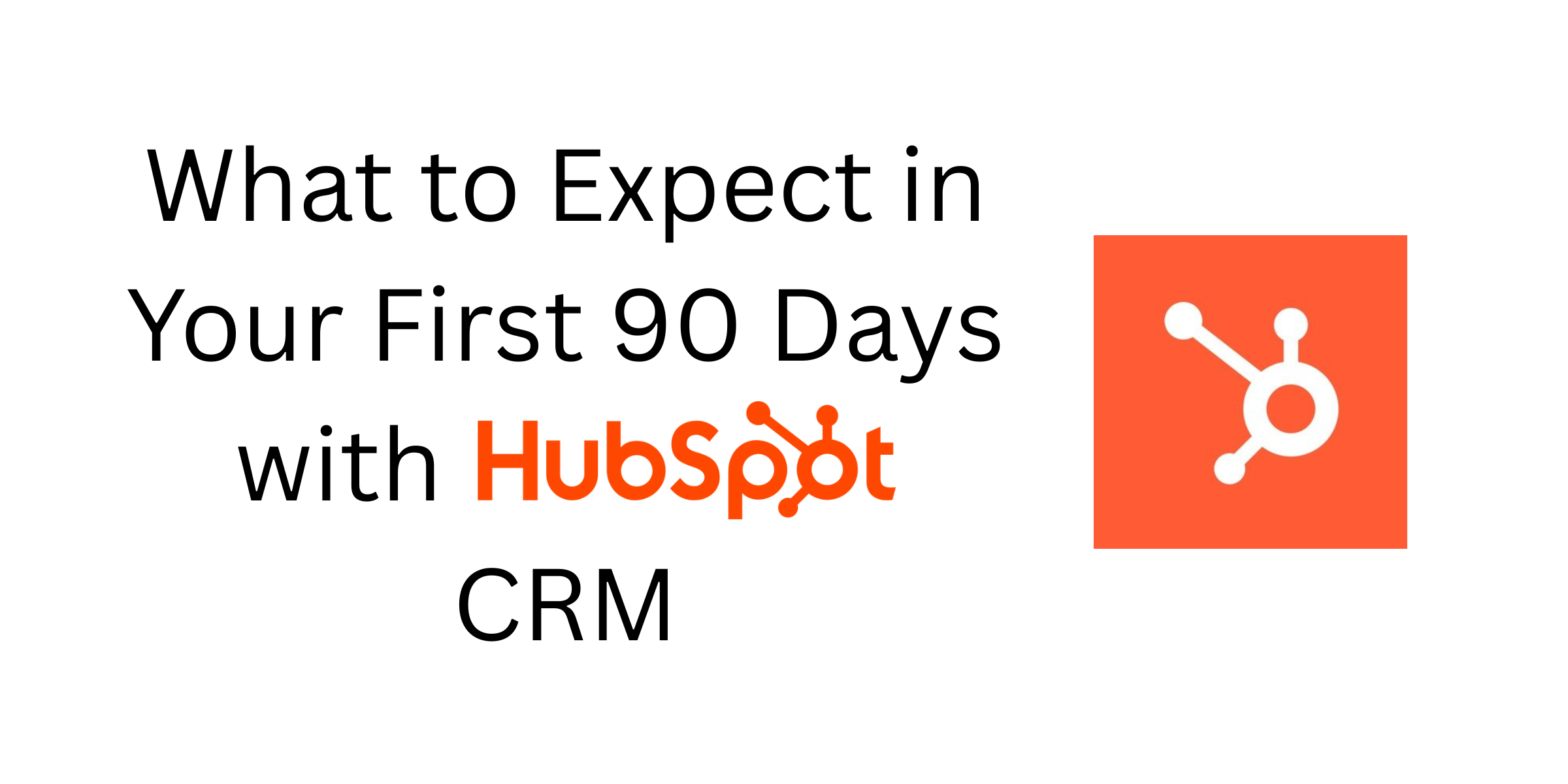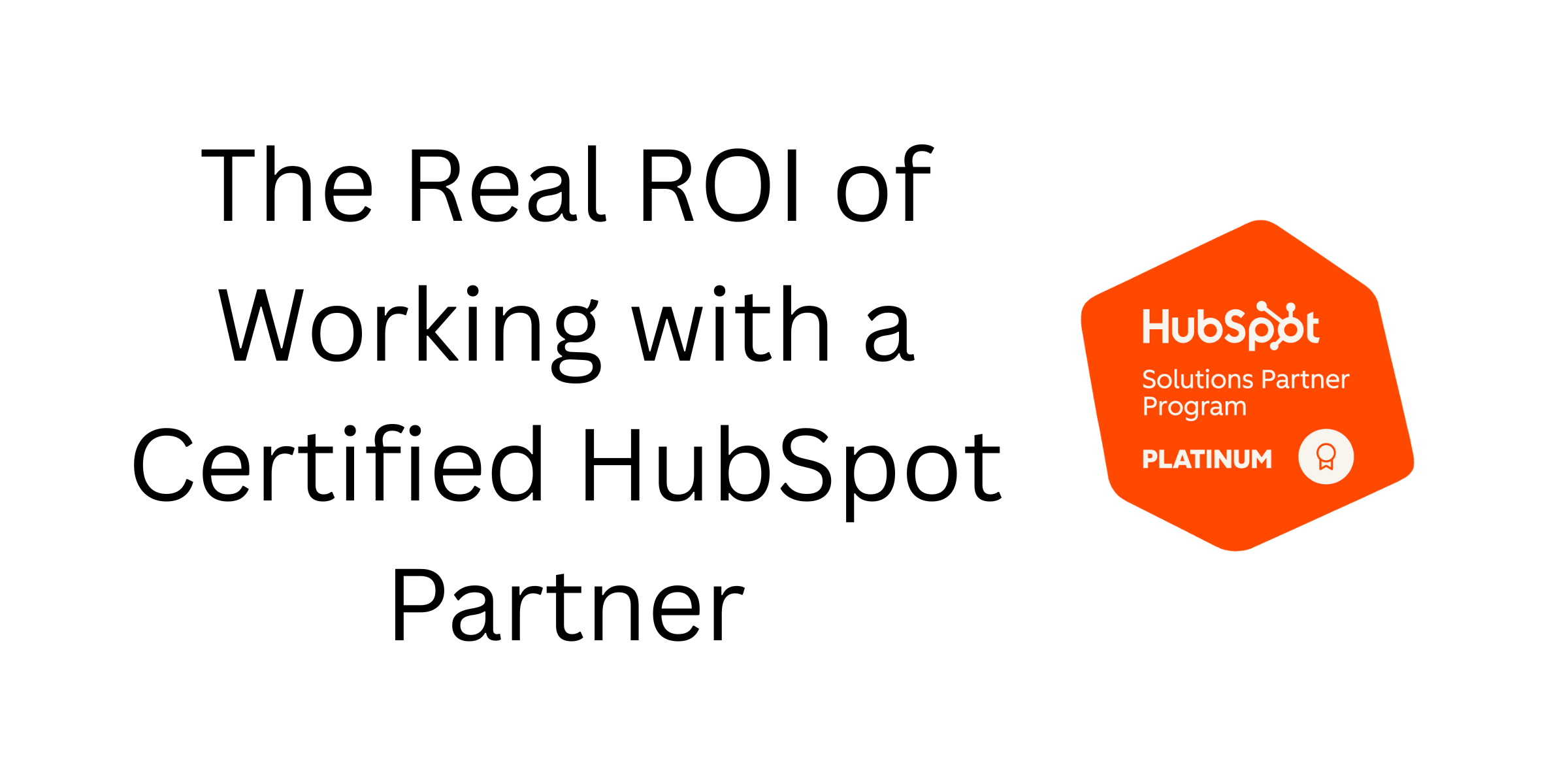How the Right CRM Supercharges Pay-for-Lead Businesses

How the Right CRM Supercharges Pay-for-Lead Businesses



A Blueprint for Scaling your CRM with Confidence
Pay-for-lead businesses qualify leads for businesses. They get paid when one of their leads completes a specific action that indicates interest, such as filling out a form, signing up for a trial, attending an event or requesting more information. The buyer pays for qualified leads, rather than for advertising clicks or impressions.
Scaling lead volumes efficiently and losing ROI due to lead mismanagement are problems that pay-for-lead businesses can face. This business model is high-stakes. Every lead counts, so finding the right CRM system is imperative to unlock efficiency, transparency, revenue growth, and scale your business.
💡 Book a free CRM consultation
What makes pay-for-lead businesses unique?
Pay-for-lead businesses have a unique set of needs. They work with high lead volumes, fast response times and challenges regarding attributions. Their business depends on accurate routing, tracking and ROI clarity. If these tools are not set up correctly, it can have a big impact on the business's bottom line.
Pay-for-lead businesses live and die by the quality, speed, and traceability of their leads. The revenue depends not only on generating leads but on delivering them accurately, efficiently, and in real-time, often across a distributed network of buyers or sales agents. Here's what sets these businesses apart:
1. High Lead Volume with Time Sensitivity
Pay-for-lead models typically generate thousands of leads per day across multiple channels, for example, search, social, affiliate networks, and more. But these leads have a short life. If they sit in a queue for even a few minutes, their value can plummet. That means your CRM must process and route leads instantly, or you're losing ROI by the second.
Key Challenge: Manual handling or delays in lead distribution can result in wasted ad spend and lower buyer satisfaction.
2. Attribution is Complex but Critical
With so many acquisition sources, e.g. Google Ads, Facebook, programmatic, and partners, attribution is complex and can become a nightmare without the right system in place. It is imperative to know which campaign, ad set, keyword, or partner delivered each lead, and whether that lead converted, was refunded, or resulted in a sale.
Without attribution, budgets can’t be optimised, ROI can’t be proved to buyers, frauds can’t be detected, and underperforming sources can be missed.
3. Dependence on Accurate Routing & Fulfilment
Unlike typical CRM models, where a lead goes to one internal sales team, in a pay-for-lead business, leads may be routed to different external buyers based on pricing tiers, industry verticals, geographic zones, or availability.
A lead that should go to Buyer A but gets sent to Buyer B could cost you hundreds in refunds or missed commissions.
4. ROI Clarity Isn’t Optional, It’s Everything
Since your revenue is tied to lead delivery or conversion, you need full visibility into cost vs. revenue per lead, per campaign, per buyer. This isn’t just about dashboards; it’s about data that drives decisions in real-time.
Your CRM must support revenue tracking down to the individual lead level and across the full lifecycle.
5. Scaling Requires Automation, Not Headcount
As you grow, lead volume spikes, buyer networks expand, and complexity multiplies. Manually managing lead flow, reporting, and compliance becomes impossible without automation. A CRM built for this model will automate lead validation, routing, deduplication, tracking, and reporting, freeing your team to focus on growth rather than admin.
A traditional CRM isn’t enough for a pay-for-lead business. You need a system optimized for monetizing leads, not just managing customer relationships.
💡 Book a free CRM consultation
Core CRM Features That Power Pay-for-Lead Growth
For pay-for-lead businesses, CRM isn’t just a contact database; it’s the operational engine that drives revenue. As lead volume scales, success hinges on precision, automation, and performance insight. Here’s a closer look at the CRM capabilities that enable growth and give pay-for-lead businesses a competitive edge:
Lead Source Attribution
Understanding exactly where each lead originates is non-negotiable. A robust CRM should support granular source and campaign-level attribution, tagging every lead with UTM parameters, referral data, tracking IDs, and custom fields. This enables marketers to tie revenue back to specific creatives, keywords, publishers, or affiliates and fuel smarter budget allocation and optimizing cost-per-lead across channels.
Smart Lead Routing
Not all leads are created equal, and neither are your buyers. A capable CRM enables dynamic, rules-based lead distribution based on real-time attributes like price thresholds, vertical (e.g., mortgage vs. solar), geographic targeting, or buyer availability. It can handle round-robin distribution, weighted priority routing, or ping-post logic, ensuring each lead reaches the best-fit buyer immediately to maximize close rates and revenue.
Real-Time Lead Scoring & Validation
Speed is money in lead gen. High-performing CRMs include built-in tools for lead scoring, deduplication, and real-time validation. They integrate with third-party services for email, phone, and IP validation to weed out bad data before it hits your sales team or buyer. Advanced systems also score leads based on behavioral data or historical conversion likelihood, letting you prioritize high-intent contacts and reduce wasted spend.
Integrations with Lead Providers & Ad Platforms
Whether you're buying leads from affiliates or running paid media in-house, seamless integrations are critical. Look for CRMs that connect natively to platforms like Facebook Lead Ads, Google Ads, TikTok, and major affiliate networks. These integrations enable real-time lead ingestion, automated campaign feedback loops, and faster activation without manual uploads or API headaches.
Performance Dashboards & ROI Tracking
Data transparency separates guesswork from growth. A CRM built for performance marketing should include customizable dashboards that track CPL, CPA, lead-to-sale conversion, and ROI by source, campaign, buyer, or agent. Granular visibility allows you to scale what works, cut what doesn’t, and deliver real-time performance reports to stakeholders without wrangling spreadsheets.
Compliance & Consent Management
With privacy regulations like TCPA (Telephone Consumer Protection Act - US Law), GDPR (General Data Protection Regulation, EU Law), and CCPA (California Consumer Privacy Act, California State Law) in full force, compliance isn’t optional; it’s essential. Your CRM should capture and store consent metadata (timestamps, IP addresses, opt-in checkboxes) for each lead. It should also offer suppression list management, DNC scrubbing, and audit logs to ensure that every lead is handled legally and ethically, reducing liability and preserving brand trust.
⬇️ Download our CRM feature guide checklist tailored for pay-per-lead models.
Signs It’s Time to Upgrade Your CRM
Not all CRMs are built for the complexity of a pay-for-lead business. If you’re operating with legacy tools, patchwork solutions, or entry-level CRMs, you might be feeling the cracks.
Here are the most common warning signs that it's time to upgrade, before growth stalls or revenue is affected.
1. You're Losing Leads Due to Slow, Manual Routing
If your team is manually distributing leads or relying on clunky workarounds to assign them, you’re likely missing out on opportunities and revenue. Leads go cold fast, and delays, whether it's routing to the wrong buyer or sending after-hours, can crush conversion rates. A modern CRM offers automated, rules-based routing that gets leads to the right place in real time.
Pain signal: "Leads are sitting in inboxes instead of getting worked on immediately."
2. Attribution is a Black Box
If you’re spending heavily across channels, but you can’t tell what’s actually working, you are unable to make accurate data-led decisions. If your CRM doesn’t give you clear visibility into which campaigns, keywords, or partners are driving ROI, you’re guessing, not optimizing. Upgrading gives you campaign-level attribution, tied directly to revenue outcomes, so you can cut waste and double down on winners.
Pain signal: "We don’t know where our best (or worst) leads are coming from."
3. Buyers or Sales Reps Are Complaining About Lead Quality
If you're constantly fielding complaints like “we already talked to this person last week,” your CRM may lack the validation, deduplication, or scoring tools needed to maintain quality. A more advanced CRM can filter out invalid or duplicate leads in real time and score them based on intent, source, or buyer requirements.
Pain signal: "Lead refund requests are rising, and buyer trust is slipping."
4. You're Scaling Campaigns but Can't Handle the Ops Load
Success brings volume, and volume brings chaos if your tech can’t keep up. Whether it's integrating new lead sources, onboarding new buyers, or adjusting routing logic on the fly, growth becomes a liability if your system lacks scalability. An upgrade ensures your CRM is a growth enabler, not a bottleneck.
Pain signal: "Campaigns are scaling, but everything behind the scenes is breaking."
5. Your Reporting Lives in Spreadsheets
If you're manually stitching together reports to show lead flow, buyer performance, or campaign ROI, you're wasting hours and probably missing key insights. A modern CRM provides real-time dashboards and automated reporting that give your team and partners visibility at a glance.
Pain signal: "Reporting takes hours and still doesn’t tell the full story."
6. You're Losing Sleep Over Compliance
In a regulated space like lead gen, one misstep with consent management or data handling can mean lawsuits or fines. If you're unsure whether your CRM is storing consent data properly, or you’re relying on screenshots and spreadsheets for proof, it's time to upgrade. A purpose-built CRM has built-in TCPA/GDPR compliance tools, audit logs, and suppression list management to reduce your legal risk.
Pain signal: "We couldn’t quickly prove consent if a regulator came knocking."
7. You're Stuck with a One-Size-Fits-All Tool
Generic CRMs might work for general B2B sales, but pay-for-lead businesses are a different beast. If you're constantly fighting your CRM to make it fit your workflow, or spending money on plugins and consultants just to patch holes, you need a system purpose-built for lead gen and performance marketing.
Pain signal: "We’re constantly troubleshooting just to get by."
If any of these symptoms sound familiar, your CRM might be costing you more than it's saving. Upgrading isn’t just about better features. It’s about unlocking more revenue, less stress, and scalable growth.
💡 Book a free CRM consultation
Choosing the Right CRM: What to Look For
With so many CRMs on the market, choosing the right one can feel overwhelming, especially when you’re running a performance-based, high-volume lead-gen operation. Not all CRMs are built for the speed, scale, and complexity of pay-for-lead businesses. Here's how to separate must-haves from nice-to-haves—and avoid costly mistakes.
Must-Haves vs. Nice-to-Haves for Lead-Gen Models
When your business depends on speed, precision, and margin control, some features are non-negotiable:
Must-Haves:
- Real-Time Lead Routing: Distribute leads instantly based on rules (geo, vertical, price, buyer availability).
- Source & Campaign Attribution: Track where every lead comes from, down to the UTM or publisher ID.
- Lead Validation & Deduplication: Filter out bad or duplicate leads automatically before they hit your pipeline.
- Buyer Management Tools: Control delivery caps, payout rules, vertical restrictions, and returns/refunds.
- Reporting & ROI Dashboards: Visualize revenue, cost per lead (CPL), and buyer performance at a glance.
- Compliance Features: Built-in TCPA/GDPR tracking with audit-ready data storage
Nice-to-Haves:
- AI-Powered Lead Scoring: Great for prioritization, but not essential if your lead quality controls are strong.
- Built-in Email/SMS Automation: Useful, but only if you're nurturing leads in-house.
- White-Label Portals for Buyers: Adds polish, but not required if you communicate directly via API or email.
- CRM-Native Landing Page Builder: Can simplify setup, but third-party form tools often work just as well.
Onboarding, Support & Customizability
When you’re switching CRMs or launching a new lead-gen channel, setup matters. The best platforms offer:
- Guided Onboarding: Look for hands-on setup support, especially if you're migrating data or integrating with multiple traffic sources or buyers.
- Live Support Access: Ask whether you’ll have access to real humans—chatbots won’t cut it when leads are on the line.
- Workflow Customization: Can the CRM adapt to your vertical-specific routing, buyer rules, and scoring logic? If you need to hack it with workarounds, it’s not built for you.
- Open API Access: If you’re working with developers or partners, make sure you can build around it, not just within it.
💡 Pro tip: Ask for a sandbox environment or trial to test routing rules, data mapping, and integrations before committing.
Pricing Transparency for High-Volume Users
Pay-for-lead businesses often run lean margins, so CRM pricing models matter. Watch out for:
- Hidden Fees: Some CRMs charge per API call, per lead, or by feature tier, which can add up fast at scale.
- Volume Tiers: Make sure pricing is predictable as you grow. Look for usage-based models that reward volume, rather than penalize it.
- Contract Terms: Month-to-month flexibility is ideal in fast-moving markets. Avoid getting locked into long-term contracts if you’re scaling or testing new verticals.
Bottom line: The best CRMs for lead-gen don’t punish you for growing fast.
Integration Ecosystem
A CRM is only as powerful as the systems it connects to. In pay-for-lead models, that means:
- Landing Page & Form Builders: Native or easy integration with tools like Unbounce, Instapage, Typeform, or custom HTML.
- Traffic Sources & Ad Platforms: Direct integrations with Facebook Lead Ads, Google Ads, TikTok, Taboola, and affiliate tracking platforms (e.g., HasOffers, CAKE).
- Lead Validation Tools: Plug-ins for services like BriteVerify, Xverify, or IPQualityScore for real-time data hygiene.
- Buyer/Fulfilment Systems: API connections to deliver leads in real time via HTTP post, ping-post, or SFTP—plus error handling and retries.
- Analytics Platforms: Connect to BI tools like Looker, Tableau, or Google Data Studio for advanced reporting, if needed.
Ask vendors: “Can you show me an end-to-end workflow, from lead capture to buyer delivery, for my use case?”
Choosing the right CRM is a strategic move. Look beyond the features list and ask: Can this platform support how we really work at scale, under pressure, and across verticals? When the answer is yes, your CRM becomes a growth multiplier, not just a management tool.
⬇️ Download our CRM feature guide checklist tailored for pay-per-lead models.
You’re already paying for the leads, now make sure you're getting full value from every one.





